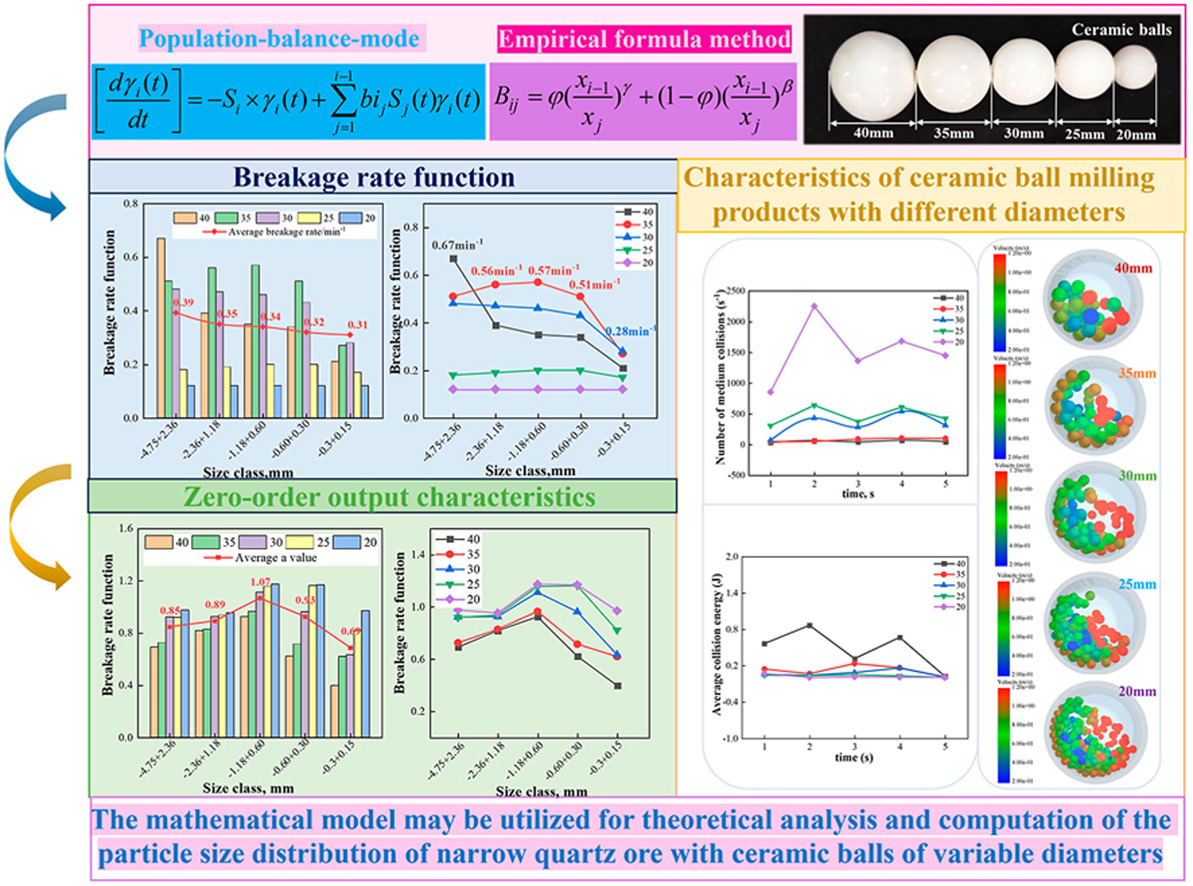• Grinding kinetics of quartz minerals with different grain sizes by ceramic ball was studied.
• Breaking rate and formation rate of fine particle size ceramic balls of different sizes were analyzed.
• Collision probability of ceramic spheres with different diameters was simulated using discrete elements.
This study investigated the effect of ceramic ball diameter on grinding performance of quartz crystal with different particle sizes in wet ball mill, and established a population-equilibrium model in quartz grinding process. The results show that the first-order crushing kinetic model can accurately describe the grinding behavior of quartz. The crushing rate of quartz mineral decreases with the decrease of the size of ceramic ball, but the crushing rate of small-size ceramic ball is less affected by the quartz feed size. On the other hand, quartz grinding products have obvious zero-order fine grain output characteristics in a short time, and with the decrease of ceramic ball diameter, the maximum grinding capacity of minerals increases first and then decreases. The grain size distribution of quartz grinding results can be calculated accurately by using the final quartz crushing parameters. The particle size distribution data simulated by the population balance model is in good agreement with the experimental data of quartz grinding process.

